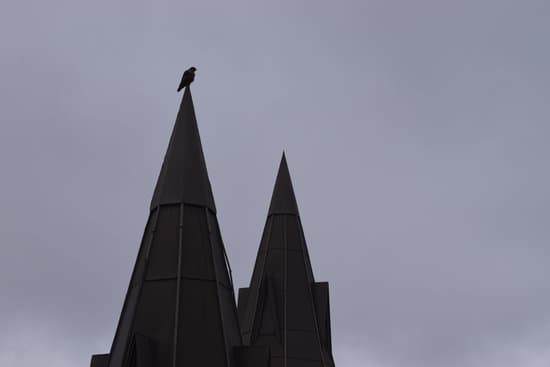Falcons on Old Main become overnight film stars
Wayne State Warriors come in all shapes, sizes . . . and species. If you look up, way up, on the clock tower of Old Main, you might just spy one of our most notable residents – a peregrine falcon. This once rare species has found a way to co-exist with people in urban settings across the country and southeast lower Michigan has a thriving population. Tall buildings seem to be the perfect stand-in for the natural cliff faces they perch on, so around Midtown that means Old Main, Maccabees, the future STEM Building, and a few other sites.
Old Main, though, is most notable as the nest site for our pair of banded peregrines, Freedom and Isabella. The balcony just under the Cass side clock face is an ideal location. The pair – six- year old Isabella was hatched in Bedford, Kentucky; her slightly older mate hails from Jackson, Michigan – began nesting on the site in 2016 and have successfully raised eight young since then. There are three chicks, or eyases, which fledged this summer.
When entering Old Main or Maccabees, you just might stumble across the remains of one of the peregrine's meals – leftover bits of bird, generally the wings, legs or heads. Peregrines are birds of prey that specialize in eating other birds. They hover high in the sky and, upon spotting a likely meal, fold their wings and plummet at speeds up to 200 miles per hour (and sometimes more!). When they strike, the unlucky bird is pretty much – well, toast.
The impact alone often kills the prey item – birds that range in size from various blackbirds and woodpeckers to pigeons and woodcocks, even the occasional duck or gull. Peregrines begin nesting when these birds become most plentiful, during the spring migration late March through May, so they have plenty to feed their growing chicks. Now we can observe the nest with our newly installed webcam. A technical issue stalled the operation of the webcam earlier this year. A replacement camera was quickly acquired, but Isabella was already hanging around the balcony, and she is a lady not to be tangled with. Corey VanStratt, the former Southeast Michigan peregrine nest coordinator for the Michigan Department of Natural Resources, commented that she is one of the fiercest peregrines in our area and very protective of her chosen nest site. Not that a three-pound bird could inflict much damage (though she is equipped with some formidable hooked talons and beak), but we didn't want to rile her. So, with assistance from the new DNR peregrine nest monitor, Danielle Dunham, a new camera was installed in May and the feed went live on June 6. During nesting season, you can check out the Warrior falcon cam at go.wayne.edu/falcons. We also have an Instagram account. Follow @WSUFalcons to keep up with our feathered friends!

With the webcam, everyone can help us monitor the progress of chicks and alert us to anything that may require our attention. That really helped out this June when one of the chicks left the nest a bit too early. Our WSU police were able to rescue the youngster and get it to a rehabilitator.
Chick #2 found his way to the WSU Farmers' Market the next day, and had to be (gently!) captured and sent off to join his brother.
Chick #3, likely a female, took her time and was more successful, perching atop Old Main and Maccabees within a week of leaving the nest site. If all goes well, we'll be able to observe our winged warriors as they raise their family year after year and watch our junior Warriors take flight, as we hope all of our Warriors, big and small, will one day do.
More information on Michigan's peregrine falcons can be found in the 2018 Michigan Peregrine Falcon Nesting Summary and the Peregrine Falcon Reproduction in Southeast Michigan.